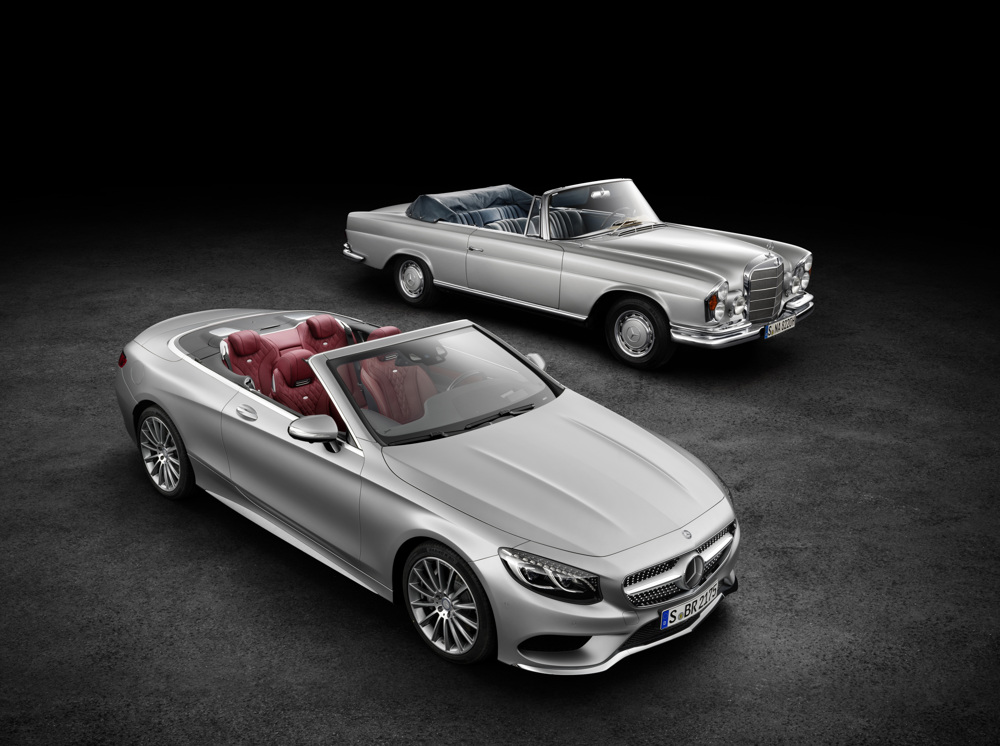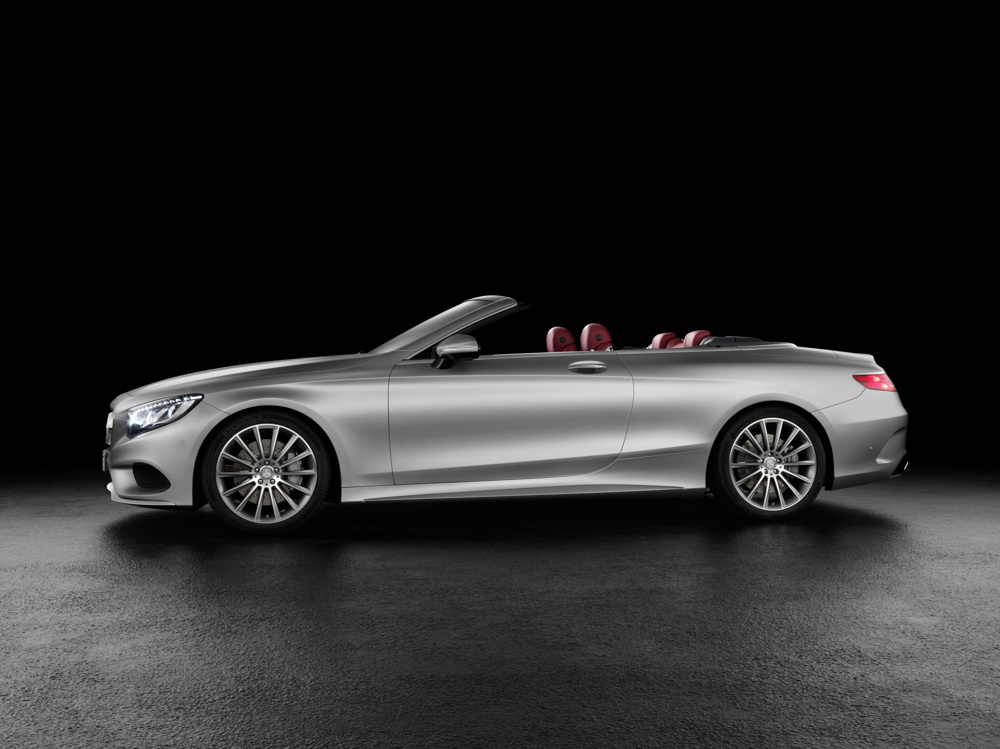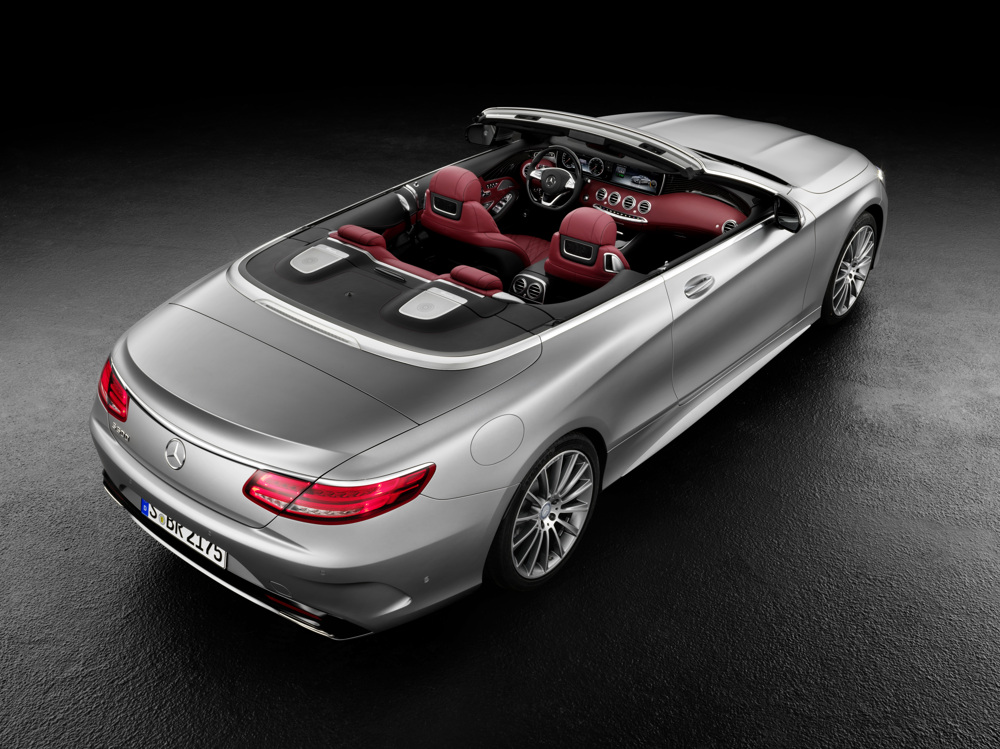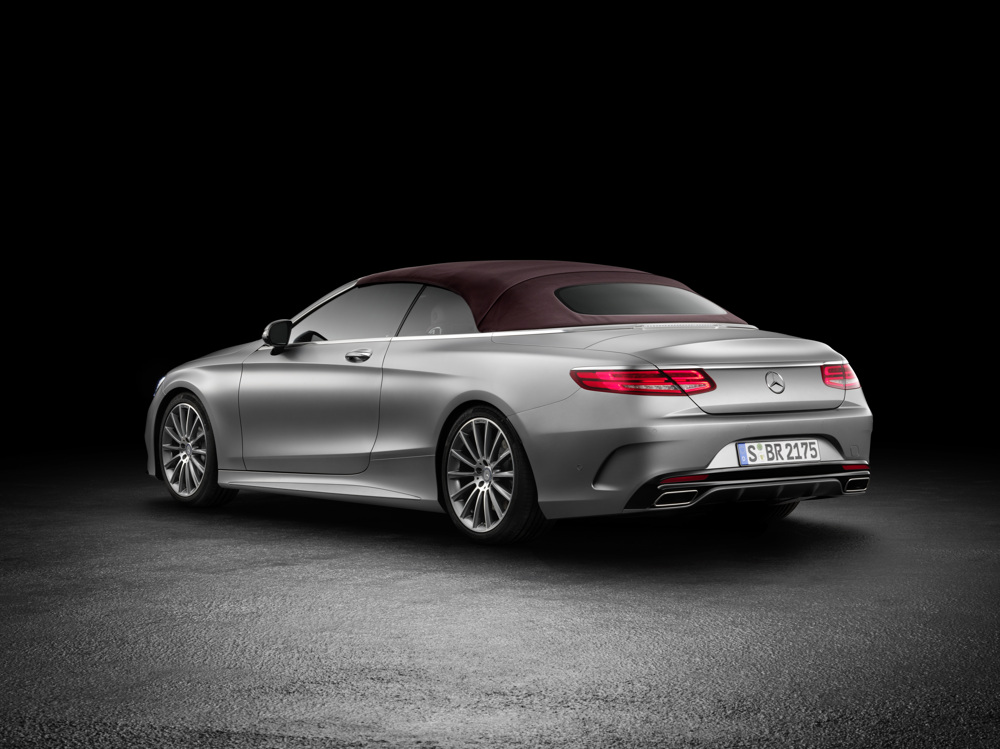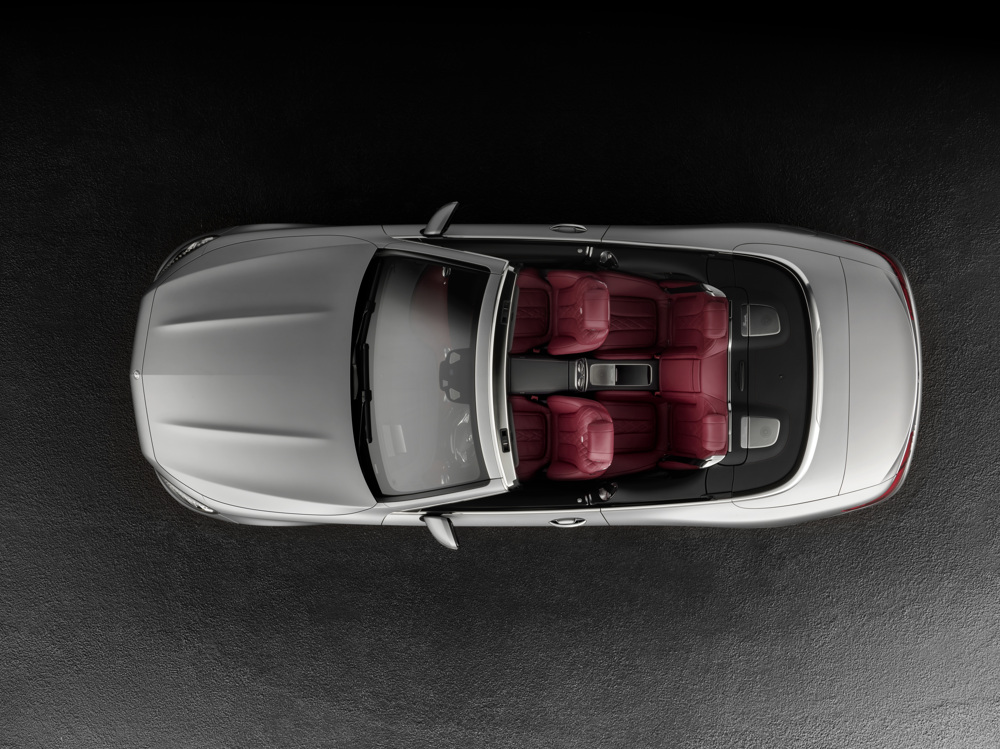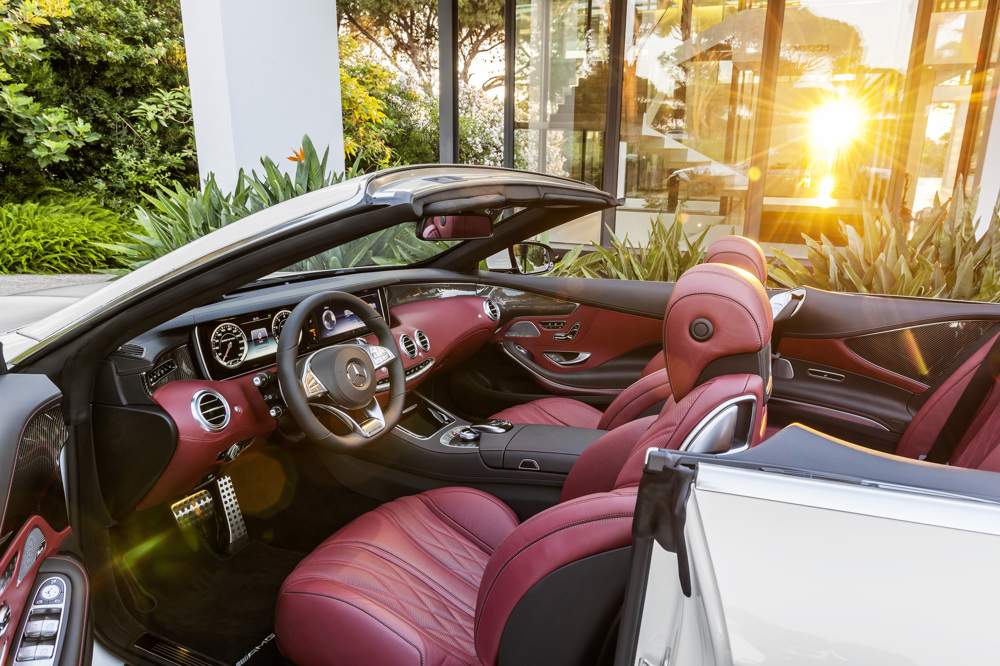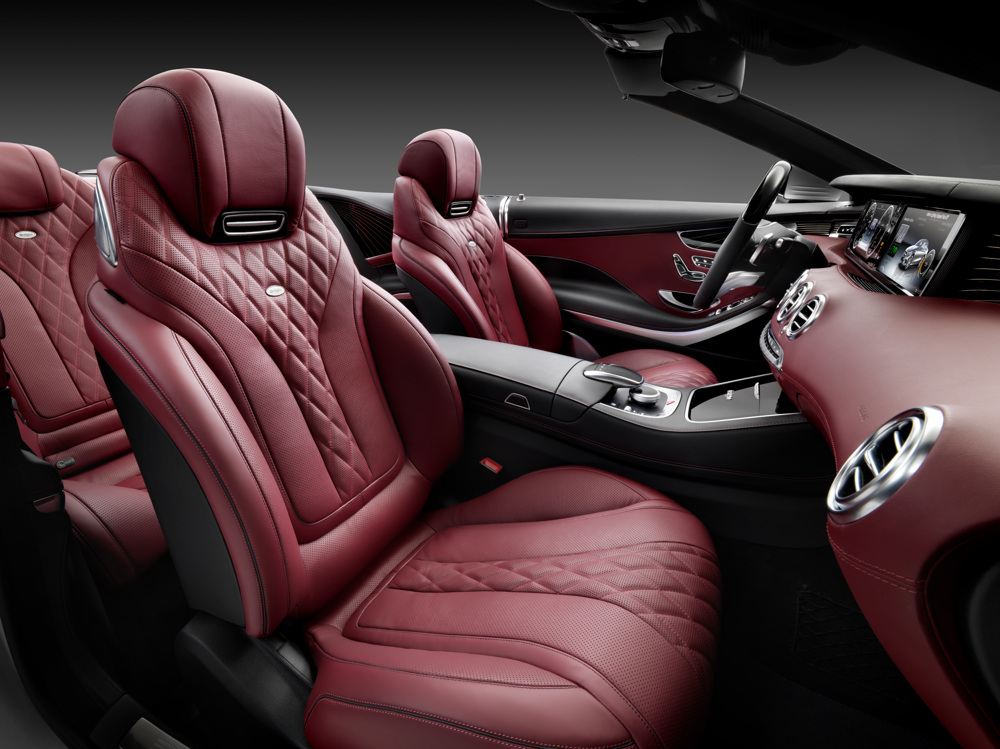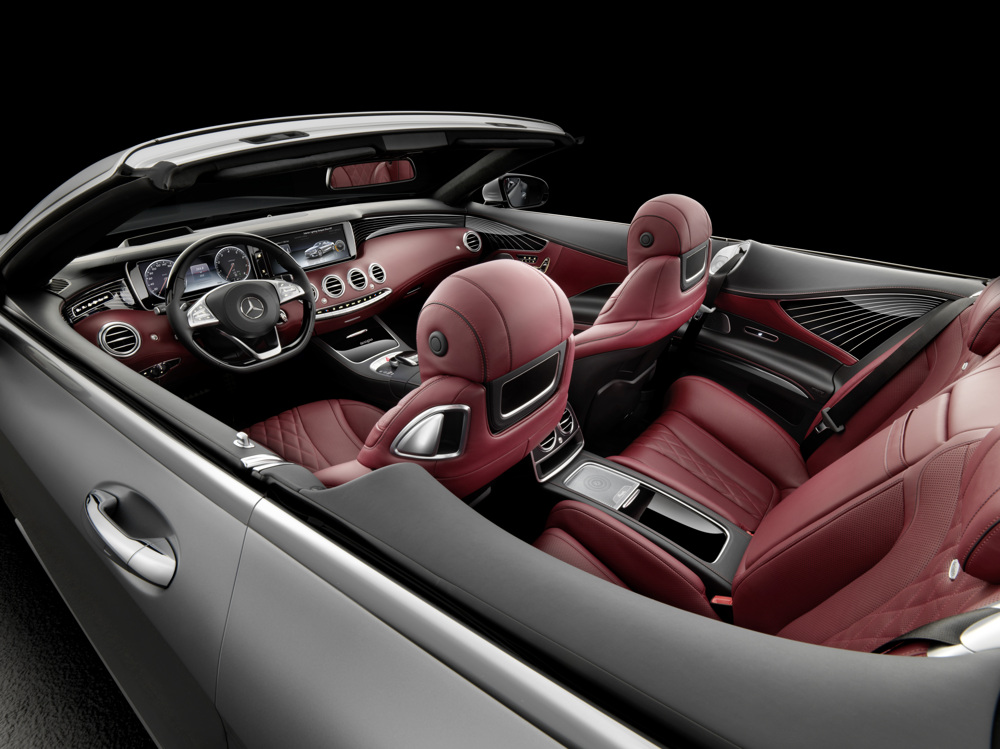With its elegant styling, lavish amenities, and whisper-quiet interior, the Mercedes-Benz S-Class has long been considered the benchmark for high-end luxury vehicles. The German brand is set to make the lineup even more special next year, not by adding, but by taking away.
Mercedes has revealed in full the 2017 S-Class Cabriolet, a droptop version of the striking S-Class Coupe and the fourth variant of the current U.S. market S-Class family. It also happens to be the automaker’s first open-top four-seat flagship since 1971’s 280 SE Cabriolet, which you can see posed next to the current model below.
Because it’s a range-topping Merc, the convertible’s list of features is impressive indeed. Nappa leather, Airmatic air suspension, touchpad-operated infotainment, automatic emergency braking, a Burmester sound system, and an Air Balance Package with fragrance and ionization all come standard, as does the three-layer, tensioning-arm acoustic soft top that opens and closes in 20 seconds. The list of optional equipment pushes the boundaries of luxury even further, as a trick head-up display, 3D sound system, hot stone-style massage program, and bevy of semi-autonomous driving features are available as well.
The Cabriolet will come in both S550 and S63 AMG 4Matic iterations when it drops in the late spring of 2016. The S550 will be powered by a 4.7-liter, twin-turbocharged V8 with 449 horsepower and 516 pound-feet of torque, while the range-topping AMG variant packs a weapons-grade 5.5-liter powerplant with 577 hp and 664 lb-ft. In AMG guise, the all-wheel drive convertible can sprint to 60 mph in just 3.9 seconds.
Both cars will make their public debuts at the 2015 Frankfurt Motor Show, which runs from September 17 to September 27. Pricing will be announced closer to the on-sale date.
Editors' Recommendations
- Mercedes-AMG EQE SUV first drive review: a better electric SUV
- Mercedes-Benz brings ChatGPT voice control to its cars
- The Mercedes-AMG EQE might be the best luxury EV right now
- Mercedes-Benz EQE SUV first drive review: ’90s look, cutting-edge tech
- Mercedes is finally bringing an electric van to the U.S.
